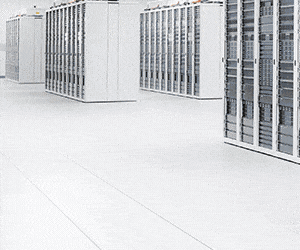That attitude won’t work for healthcare organizations that want to use AI and other technologies to streamline their workflows while also looking to optimize their data center environments. Many healthcare organizations have started to migrate their electronic health records (EHR) systems from on-premises to the cloud. And workloads that stay on-premises require more advanced processors , which need improved power and cooling capabilities. Organizations must develop the agility and flexibility to integrate new high-density environments as projects arise to meet demand.
With all of these variables to consider, healthcare organizations must rethink their data center architecture in order to place their workloads most efficiently, which could reduce licensing costs and maximize the benefits of AI.
Today, improvements and efficiencies change vastly from one year to the next, affecting power and cooling and rack density. A healthcare organization can start by identifying its strategy even if it hasn’t yet taken any steps to modernize, which will allow it to proceed in an intentional and meaningful way.
READ MORE: Build healthcare IT infrastructure to meet the needs of organizations.
Considerations About VDI and Hyperconverged Infrastructure
Virtual desktop infrastructure sees wide use within healthcare. Whether you’re at a family clinic or on a large hospital campus, thin clients are usually visible. It helps clinical teams be more mobile, allowing them to connect from anywhere and still securely access the EHR and other necessary systems in a compliant manner. That resiliency and operational effectiveness is crucial so healthcare workers can act on patient data to deliver care. Patients also appreciate this flexibility, as their data stays secure in the data center, not on clinical end devices within the clinic or hospital.
It also removes some cost burdens: VDI creates less management overhead because it can create consistent images and standardize. It also reduces the organization’s hardware footprint by consolidating the allocation of physical machines and, by extension, the number of servers, which also helps to reduce the data center’s power and cooling footprint.
These days, even healthcare is looking for hybrid environments, as it is no longer financially efficient to fully invest in just one type of architecture, given the disparity of workloads that organizations must support. Many CFOs are looking to make more operational expenditures rather than capital expenditures due to various macroeconomic concerns and uncertainties today. And there are different verticals within healthcare itself, from retail to manufacturing, so a hyperconverged infrastructure may be appropriate in some of those environments.
The importance of evaluating the enterprise applications overall cannot be stressed enough: Where and how those applications are best served will determine the best way to architect a cohesive, comprehensive design that will help optimize all applications within the organization. These are complex environments that can be successfully supported and maintained when they are designed properly; don’t try to fit a square peg into a round hole.












